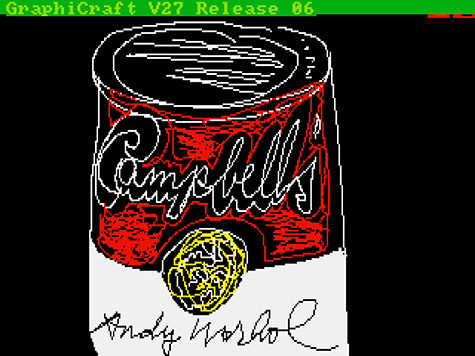Thanks to Golan Levin’s “atypical, anti-disciplinary and inter-institutional” FRSCI lab, the CMU Computer Club, and ROM hacking bit-boy Cory Archangel, several instances of previously unknown visual artwork, done by Andy Warhol on the Amiga 1000 in 1985, have been recovered.
Warhol’s use of this classic multimedia system is but one of the many surprising, rich aspects of Amiga history that are carefully detailed by Jimmy Maher in The Future Was Here: The Commodore Amiga. An early topic is the launch of the first Amiga computer at the Lincoln Center, with Andy Warhol and Debbie Harry in attendance and with Warhol producing a portrait of her on the machine during the festivities. Maher also writes about how Warhol’s attitude toward the computer was actually a bit retrograde in some ways: Rather than thinking of the screen as a first-class medium for visual art, he wanted better printers that could produce work in a more conventional medium. The discussion of Warhol’s involvement is but one chapter (actually, less than one chapter) in a book that covers the Amiga’s hardware development, technical advances, relationship to image editing and video processing work, and lively demos — from the early, famous “Boing Ball” demo to the productions of the demoscene. The Future Was Here is the latest book in the Platform Studies series, which I edit with Ian Bogost.
With these images surfacing now, after almost 30 years, the age-old question “soup or art?” is awakened in us once again. Do we need to print these out to enjoy them? To sell them for cash? Did Warhol invent what is now thought of as the “MS Paint” style, back on the Amiga 1000 in 1985?
Note, finally, that there is a detailed report on the recovery project provided in PDF form.





Your first link leads back to this very post!
Oops! There’s not even a good Warhol joke in that mistake … maybe if the post were about Escher? Anyway, I’ve fixed it now by including the appropriate URL (same one that goes with the last image).
Warren Sack sent a link to the Rolling Stone article on this topic.